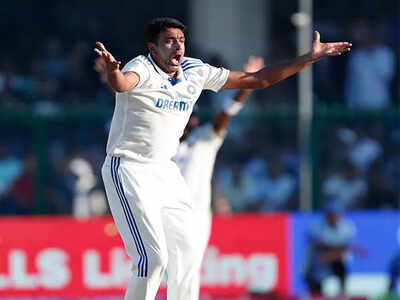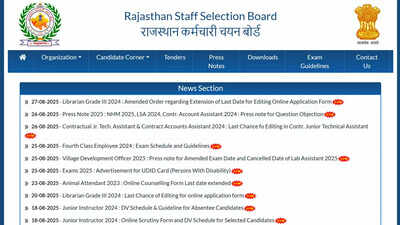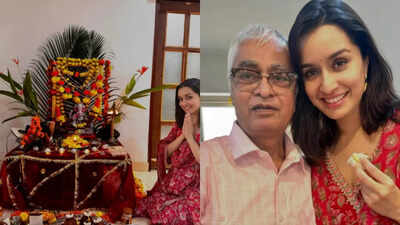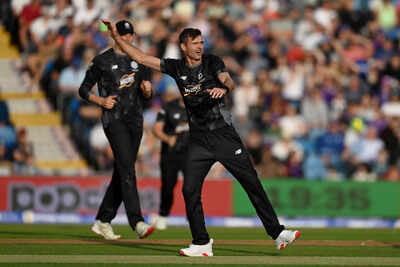
Former India spinner Ravichandran Ashwin has announced his retirement from the Indian Premier League (IPL). Ashwin broke the news on the social media platform X, stating that he will now explore playing in leagues around the world. For cricket fans, this marks the end of an era, but it is also a chance to reflect on how a young engineering graduate from Chennai transformed into one of India’s most celebrated all-rounders.Here’s a closer look at how he built a legendary cricket career while keeping his education at the forefront.
From Engineering to cricketing glory
Born on September 17, 1986, in Madras (now Chennai), Tamil Nadu, Ashwin grew up in a household where cricket was a family affair. His father, Ravichandran, a medium-pace bowler at the club level, introduced him to the game. While many of his peers were focused solely on sports or academics, Ashwin managed to balance both. He attended Padma Seshadri Bala Bhavan and later St. Bede’s Anglo-Indian Higher Secondary School, where he initially played as an opening batter.At 18, Ashwin’s focus shifted to off-spin bowling, a decision that would define his future. Alongside cricket, he pursued higher education at the Sri Sivasubramaniya Nadar College of Engineering in Chennai and graduated in 2008 with a bachelor’s degree in Information Technology. For students, this is a powerful reminder that excellence in academics can coexist with a sporting dream.
Breaking into domestic cricket
Ashwin’s professional journey began in 2006 when he debuted for Tamil Nadu in the Ranji Trophy, claiming six wickets in his first-class match against Haryana. By February 2007, he had made his List A debut, followed by a Twenty20 debut two months later. His leadership skills soon shone through, as he captained Tamil Nadu to the Vijay Hazare Trophy title in 2008–09 and again led them to the semifinals in 2015–16.
Carrom balls and Chennai Super Kings
Ashwin’s rise in the Indian Premier League was gradual but spectacular. Picked by the Chennai Super Kings (CSK) in 2008, he played sparingly initially but had a breakthrough in 2010, taking 13 wickets as CSK clinched their first IPL trophy. His precision in powerplay overs and at the death, combined with his inventive “carrom ball,” made him one of the most feared spinners in the tournament. The carrom ball, a leg-break disguised as an offbreak, was an improvisation of the soduku ball he perfected playing street cricket in Chennai, a testament to how creativity in small spaces can lead to global acclaim.Over the years, Ashwin played for multiple IPL franchises, including Rising Pune Supergiant, Punjab Kings (as captain), Delhi Capitals, and Rajasthan Royals. Today, he ranks among the top 10 wicket-takers in IPL history.
A glittering international career
Ashwin made his One Day International (ODI) debut in June 2010 against Sri Lanka, taking two wickets and scoring a quick 38 runs. Later that year, he debuted in Twenty20 Internationals (T20Is) and was part of the Indian squad that won the 2010 Asia Cup. He also featured in India’s 2011 ODI World Cup-winning team, playing two matches, and later in the 2013 ICC Champions Trophy-winning squad.His Test debut in November 2011 against the West Indies was historic. Ashwin took nine wickets, including six in an innings, and scored a century in the series, immediately cementing his reputation as a world-class all-rounder. Over the next decade, he became the fastest Indian to reach 50 Test wickets, collected multiple Player of the Series awards (equaling Muttiah Muralitharan’s record of 11), and surpassed milestones of 250, 300, 350, 400, 450, and 500 Test wickets at astonishing speed.By the time he announced his retirement from international cricket in December 2024, Ashwin had claimed 537 Test wickets in 106 matches and scored 3,503 runs, including six centuries. He is one of only three players in history to have taken over 500 Test wickets while also scoring more than 3,000 runs, a record shared with Shane Warne and Stuart Broad. His mastery of dismissing left-handed batters (268 in Tests) and the rare feat of scoring a century while taking five wickets in the same Test match underscore his all-round brilliance.
Lessons from Ashwin’s journey
Ashwin’s story is more than just statistics and accolades; it is about the balance of education and passion. Graduating with an IT degree while chasing cricketing excellence, he demonstrates that academic grounding can coexist with sporting ambition. Students and aspiring athletes can take away three lessons from his journey:
- Discipline in dual pursuits: Excelling in both studies and sport is possible with focus and planning.
- Innovation in practice: From the streets of Chennai to global stadiums, creativity and hard work can set you apart.
- Persistence through setbacks: Injuries, team changes, and form slumps didn’t stop Ashwin from breaking records.
The spinner who inspired a generation
From a bright-eyed IT graduate to one of India’s most prolific spinners, Ravichandran Ashwin’s journey is a masterclass in balancing intellect and passion. His story reminds aspiring cricketers and students alike that education and sports can go hand in hand, and that discipline, curiosity, and relentless hard work can turn dreams into records. As he steps away from the IPL, Ashwin leaves behind more than wickets and centuries, he leaves a blueprint for how talent, determination, and knowledge can combine to build a truly legendary career. Here’s to a happy retirement, Ashwin Anna.TOI Education is on WhatsApp now. Follow us here.






